The Culture and Beauty of the Great White North
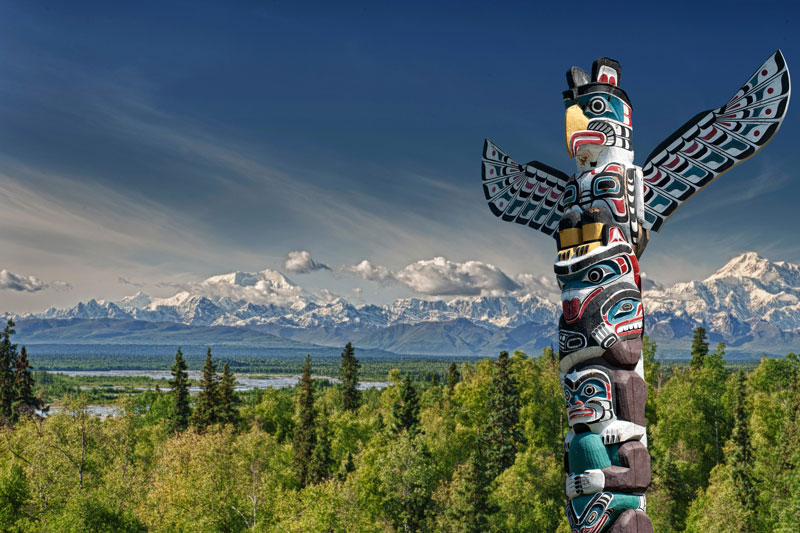
In understanding and researching indigenous history, it is sometimes easy to forget that people lived and thrived throughout all of North America dating back to prehistoric times – not just within what is now the United States. That’s one reason Canada is often overlooked as a tourist destination for those seeking to explore and experience Native culture and heritage.
But that shouldn’t be the case. Canada is home to some of the most breathtaking parks on indigenous lands anywhere in the world, and also has dozens of cultural centers dedicated to preserving and teaching Native stories, heritage and traditions passed down through the generations. Here, we’ll give just a sample of them.
But first, a little background.
What are the main indigenous tribes of Canada?
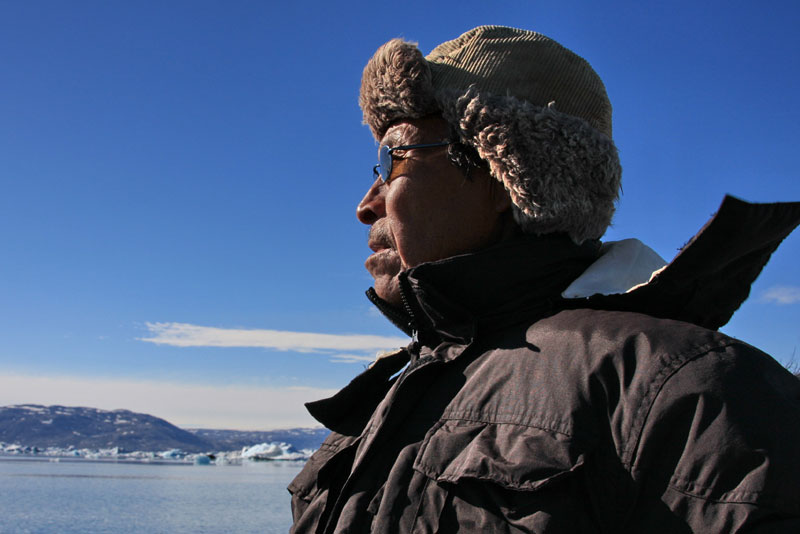
There are three main indigenous groups of Canada: the First Nations, Inuit and Métis.
The Inuit primarily inhabit the northern regions of Canada. Their ancestral homeland, known as Inuit Nunangat, essentially encompasses the Arctic region, very similar to the Inupiat and others in the far north of Alaska. Inuit translates into “people,” and the language they speak is called Inuktitut. However, there are dozens of regional dialects that differ slightly from Inuktitut.
As one can imagine, the Inuit people have had to endure extreme cold temperatures, and developed tools and shelter that helped them adapt. They survived primarily on fish and sea mammals such as seals and walruses, still commonly found in the Arctic today.
There are approximately 70,000 Inuit in Canada, however the vast majority live in very small communities, usually not numbering more than 1,000 residents, spread out throughout the Arctic. These Inuit communities are desolate, remote and very poor, detached thousands of miles away from any urban centers where everyday goods or jobs are available. Some of these communities are only accessible by plane.
When the Canadian government formally recognized the Inuit claims to the land, the residents changed the name of the region to Nunavut, which translates to “our land” in Inuktitut.
Métis peoples are considered to be of mixed ancestry of indigenous and European settlers, and live mostly in the Prairie provinces and Ontario. Specifically, the Métis people originated in the early 18th century, when French and Scottish fur traders married and had children with Cree and Anishinabe women. Their descendants formed a unique culture, usually along fur trader routes, drawing from both European and Native heritage, and established nationhood in the Northwest.
First Nations peoples were the original inhabitants of the land that is now Canada, often occupying all the territories south of the Arctic (or south of the tree line). They are by far the most populous, and most well known, of Canada’s indigenous population.
First Nations
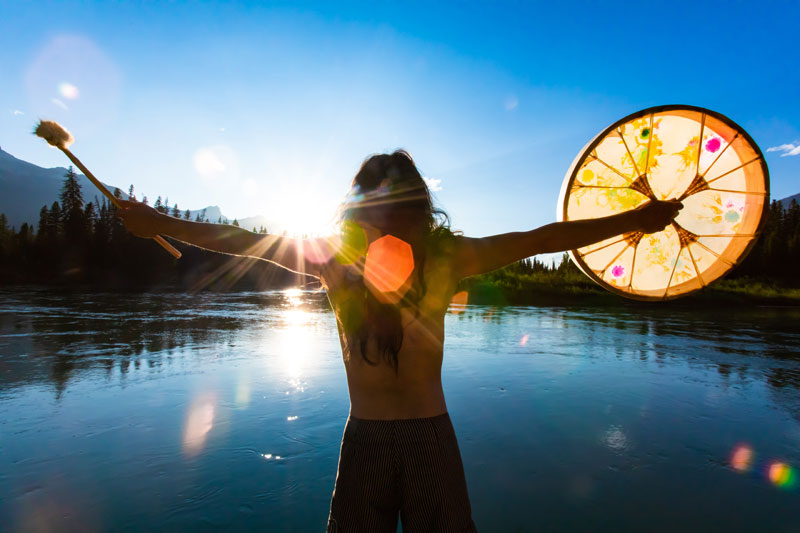
There are over 634 recognized First Nations governments or bands, roughly half of which are in the provinces of Ontario and British Columbia. The total population with First Nation identity is more than 850,000.
What is extraordinary about the First Nations people is that each of those 634 governments has its own unique culture, customs, spiritual beliefs and traditions. Each of these unique cultures is derived from their own specific surroundings, their sacred land.
There is one common element however: The circle. All First Nations people throughout Canada recognize the circle as the universal symbol of life, specifically the cycle of life that must be respected and cherished. The circle represents the interconnection and interdependence of all forms of life on one another, and the symbol is often the focus of countless Tribal ceremonies, worship, songs and traditions.
Visiting Indigenous Canada
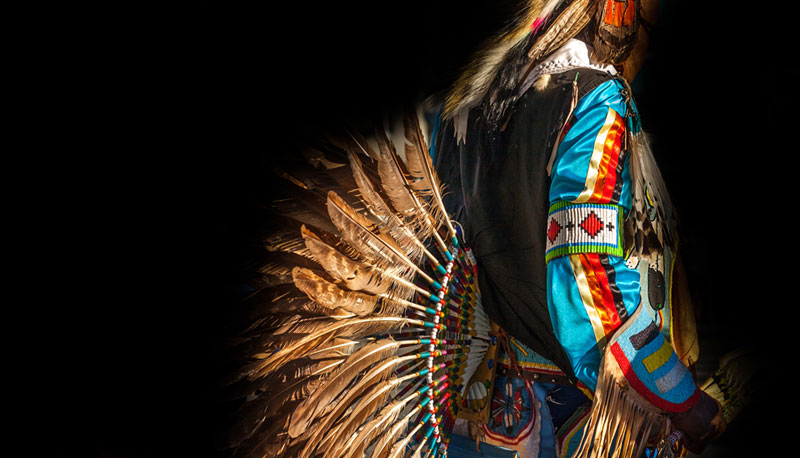
Generally speaking, there are two primary types of indigenous tourism: adventurous and educational. Many Native lands encompass some of the most extraordinary natural wonders in the world, such as Antelope Canyon in the Navajo Nation, Havasu Falls within the Havasupai Indian Reservation, or the countless glaciers and rivers of Alaska. Other Native sites have gone to great lengths to protect and preserve their history and culture, expending enormous capital to build some of the greatest Native museums anywhere. Examples include the First Americans Museum in Oklahoma City and the Ah-Tah-Thi-Ki Museum within the Big Cypress Reservation in South Florida.
In Canada, as one can imagine, there are Native lands that are perfect for the great outdoor adventure – exotic wildlife, lakes, mountains, and even glaciers. There are also several Cultural Centers, which offer incredible tours for those hoping to learn more about Native life and history, and the incredible diversity of culture and tradition that makes Indigenous Canada what it is.
So without further ado, here are some of the best places to visit in Native Canada.
Banff National Park

Banff National Park is Canada’s first and most visited national park, with over 3 million visitors a year. Located In the heart of the Rockies in Alberta, the park’s extraordinary mountain scenery and serene lakes draw visitors from all over the world for hiking, biking, skiing and camping.
However, the park is also rich in Canadian indigenous heritage, and several Native tour guides are available to take you on guided, cultural tours. There’s a medicine walk where guides identify flora and fauna and their healing properties. There’s native mountain hike tours that explore the history of the Cascade Ponds and possibly even come across ancient petroglyphs and other Native art.
Banff is part of the Canadian Rocky Mountain Parks UNESCO World Heritage Site.
Bruce Peninsula National Park
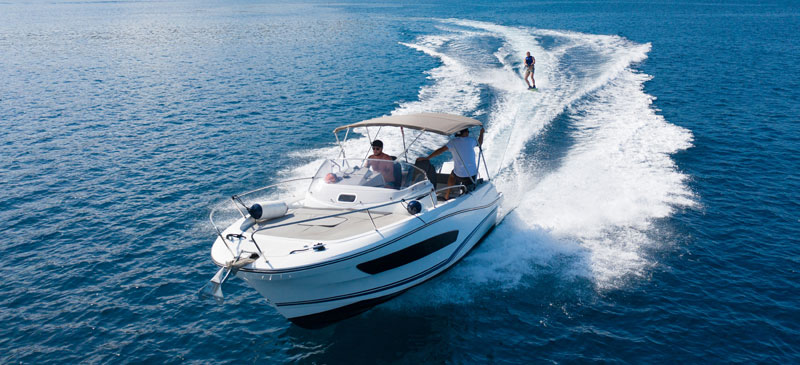
Just about a four hour drive from Toronto, in Tobermory, Ontario, is the Bruce Peninsula National Park, an incredible biosphere reserve that boasts wildlife such as black bears and rare species of all kinds. World renowned for waterfront beauty, intricate caves and limescale cliffs, the park also offers truly immersive Native culture experiences for those who seek them.
The Anishinaabe People resided in this area for centuries, and continue to have a deep connection to the land, and all the living things within it. Today Tribal members offer visitors tours that provide a window into their cultural and spiritual customs and history, even telling stories of the Anishinaabe People exactly as they were told through generations. These educational tours can be found at Cape Croker Park, a campground within Bruce Peninsula National Park.
Black River Wilderness Park
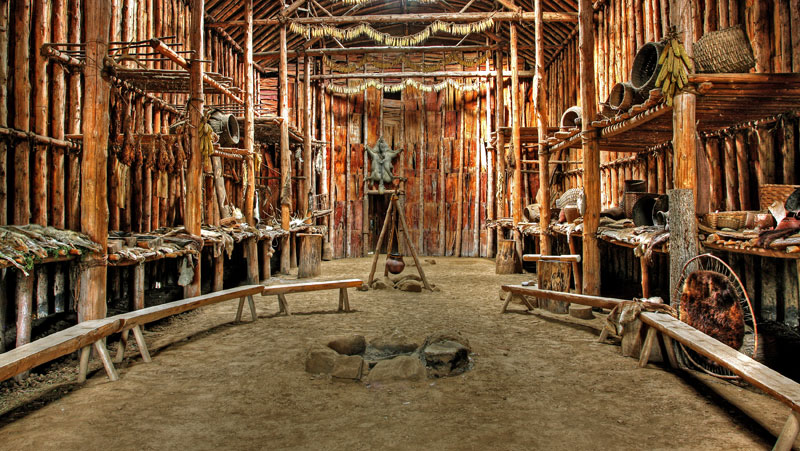
Located just 90 minutes north of Toronto, the 180-acre Black River Wilderness Park is another example of a site that allows visitors to completely immerse themselves in the culture and history of the Native people that have lived there for centuries.
Guests may stay the night in a yurt or tipi, attend workshops on Native arts and crafts, or even learn to play traditional drums. The Chippewas of Rama First Nation who call this park home enjoy taking visitors on guided tours of the surrounding wilderness, and teaching the importance of the Eastern white pine. More importantly, they enjoy teaching about the Seven Grandfather teachings passed down from the Creator, and that are at the center of community culture. These are: Wisdom, Love, Respect, Bravery, Honesty, Humility, and Truth.
Forillon National Park
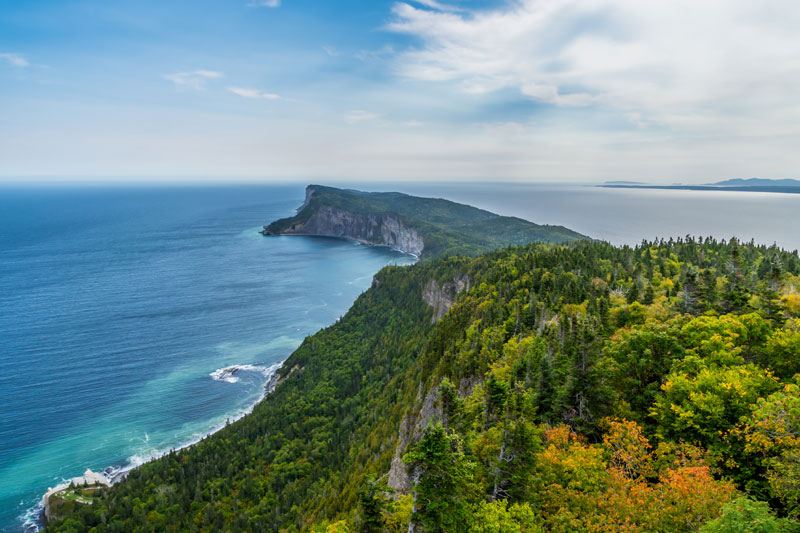
Forillon National Park was the very first national park in Quebec, where the Chic-Choc Mountains converge with the sea. It is famous for its exotic wildlife – such as birds and reptiles – colorful and vibrant plantlife, and natural beauty. It is also one of the most popular sites in North America for whale watching.
The Mi’gmaq and their ancestors, the area’s first inhabitants, have been regular visitors at the Penouille Peninsula for nearly 4,000 years, and lived primarily through fishing. The Grande-Grave National Heritage Site offers unique insights to ancient fishing families and culture. There is even a beautifully preserved 19th-century era fishing village.
Just a few minutes down the road sits the Gespeg Interpretation Site, which showcases the Mi’gmaq culture of the indigenous community in Gaspé. Through interpretive activities, the site highlights the history of their community, which dates back to 1675, when the Gespeg Mi’gmac settled in Gaspé Bay, getting its name from the Mi’gmac word “gespeg,” which translates to “where the earth ends.”
Manitoulin Island
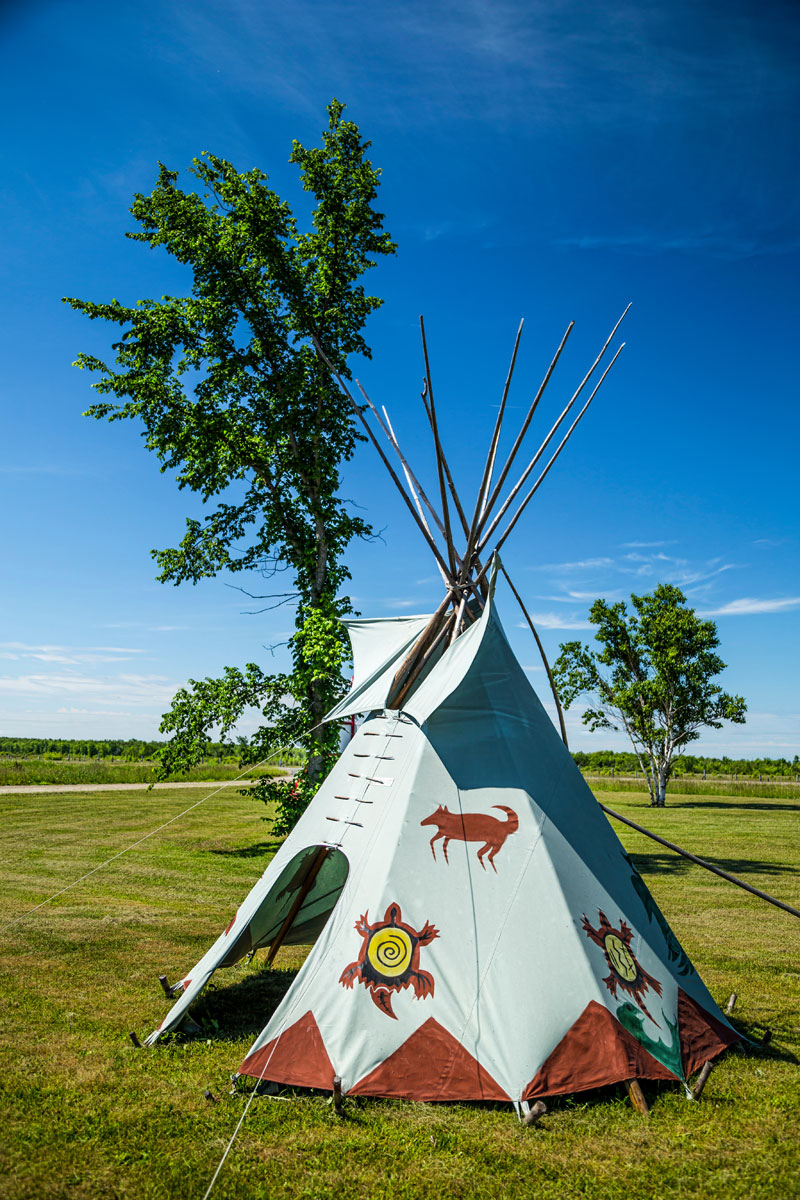
Manitoulin Island in Ontario, is the largest freshwater lake island in the world, and one of the more popular attractions for outdoor enthusiasts anywhere in Canada.
The diverse ecology of the island provides for just about everything a nature lover could ask for. Breathtaking waterfalls, winding trails, awe-inspiring overlooks and of course incredible lake views are just some of the natural beauty Manitoulin Island has to offer.
However, there is also a rich cultural aspect as well. No less than seven First Nations reserves can be found on Manitoulin, each welcoming tourists to share in their culture and history. There are seemingly countless museums and Native art galleries, as well as traditional pow wows and events that immerse you in the community spirit and history of the Anishnabek people. Nearly every weekend includes a different festival, dance, market or event to attend.
Tombstone Territorial Park
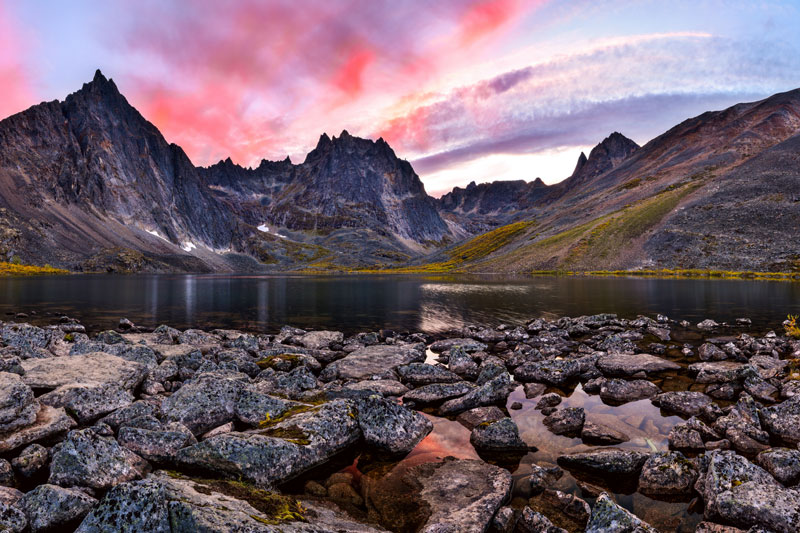
Tombstone Territorial Park, located less than 180 miles from the Arctic Circle, is home to a unique wilderness of rugged peaks, permafrost landforms and abundant wildlife in the Yukon territory. It is also home to the Tr’ondëk Hwëch, a First Nation band that has lived here for thousands of years.
Ancient artifacts, paintings and burial grounds are all found within this park. In fact, there are over 70 protected First Nations ecological and archeological sites at Tombstone. Like many other indigenous landmarks, the park is also well known for its extraordinary natural beauty, monuments and wildlife. The area’s Hän name Ddhäl Ch’èl Cha Nän means “ragged mountain land.”
The Dempster Highway bisects the park and provides an opportunity to witness the incredible arctic wilderness, tundras and wildlife from your vehicle, while also providing easy access to hiking trails.
Kluane National Park and Reserve
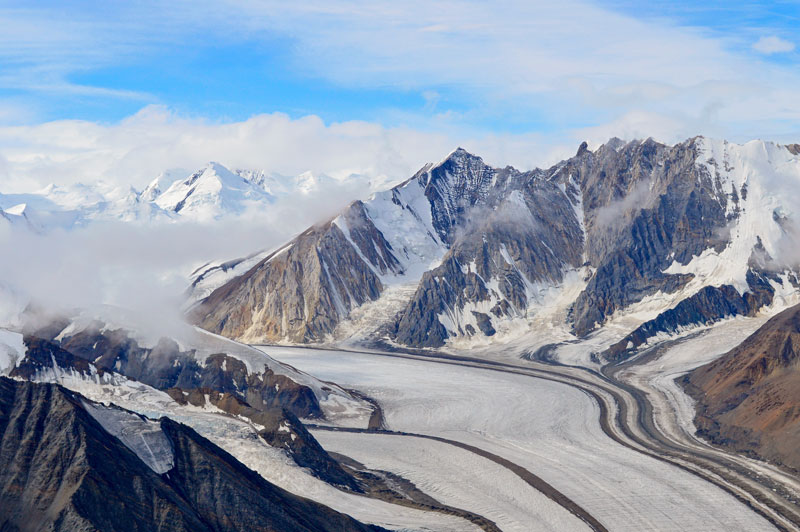
Kluane National Park and Reserve, also located in Canada’s Yukon territory, is part of the traditional territory of the Champagne and Aishihik First Nations and Kluane First Nation.
The Reserve includes the highest mountain in Canada, Mount Logan (19,551 feet) of the Saint Elias Mountains, as well as its largest ice field. Mountains and glaciers, including Donjek Glacier, dominate the park’s landscape, covering 83% of its area. The rest of the land in the park is forest and tundra.
Closeby is Vuntut National Park, Yukon’s only fly-in community, and easily one of the most difficult parks to travel to in Canada. Vuntut is home to the Vuntut Gwitchin people, which in their language means “people of the lakes.” They still practice the same lifestyle and customs as they have for generations. This includes tracking the migration of Porcupine Caribou Herd, as they wander back and forth between Yukon and Alaska every year.
If you decide to travel to Vuntut National Park remember it is pure arctic wilderness. Visitors must be entirely self-sufficient and able to handle any medical or weather-related emergency on their trip.
Baffin Island
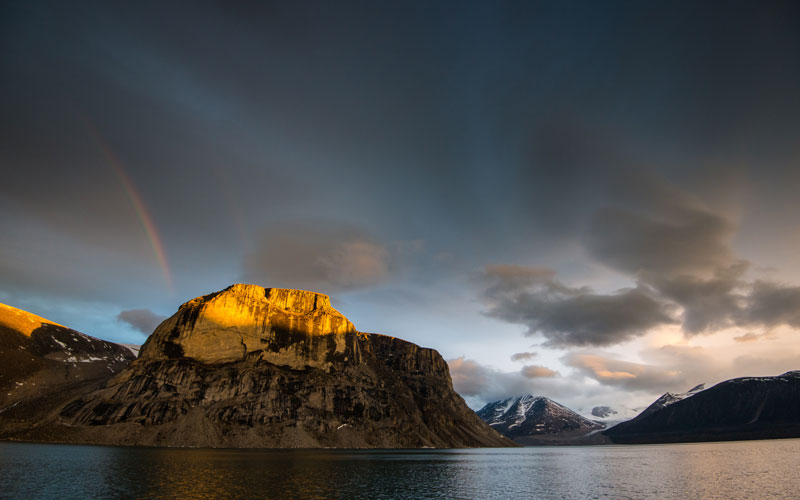
Baffin Island is considered to be one of the more popular tourist attractions in the arctic, at least for those with an adventurous spirit.
The fifth largest island on Earth, visitors can choose from any number of experiences, from going dog sledding, to whale watching on arctic ocean tours, to cross country skiing, to rock climbing, to even building your own igloo. Tourists can spot narwhal, beluga, and polar bears during an Arctic Safari. All of these incredible adventures are led by local Inuit guides, who take great pride in sharing and educating visitors about their ancestral homeland.
Outdoor enthusiasts may climb Clyde River’s fjord walls, or ski or hike one of the island’s 19 named peaks, of which Angilaaq Mountain is the tallest and most prominent.
Sirmilik National Park
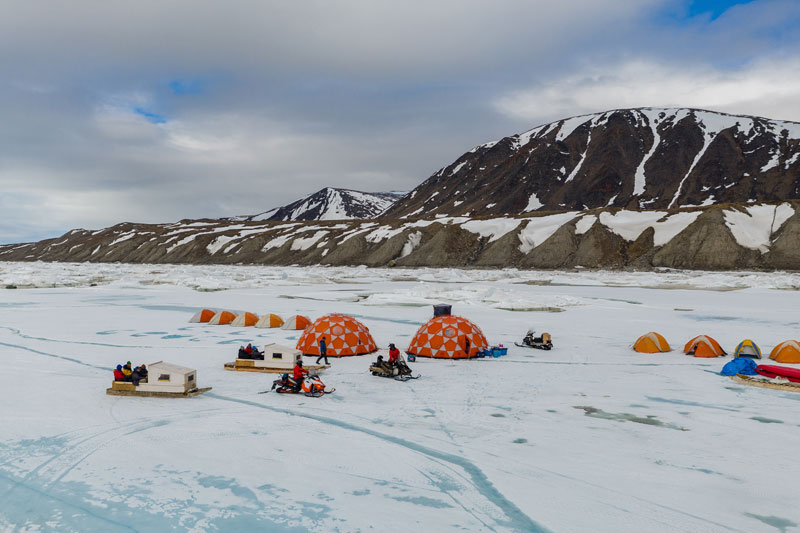
Roughly translated to “the place of glaciers”, Sirmilik National Park is located on the north end of Baffin Island. It is also sometimes called the “Yosemite of the North,” thanks to an amazing array of wildlife and seabirds that are easily seen by tourists, such as snowy owls, narwhal and, of course, polar bears.
Adventurers love to ski the park’s many glaciers, birdwatch from the sea cliffs, or go paddling in the icy waters among the seals and walruses, but the park is also home to the Inuit who not only offer tours of Sirmilik but also showcase their own cultural sites, complete with traditional ceremonies and storytelling.
Kejimkujik National Park
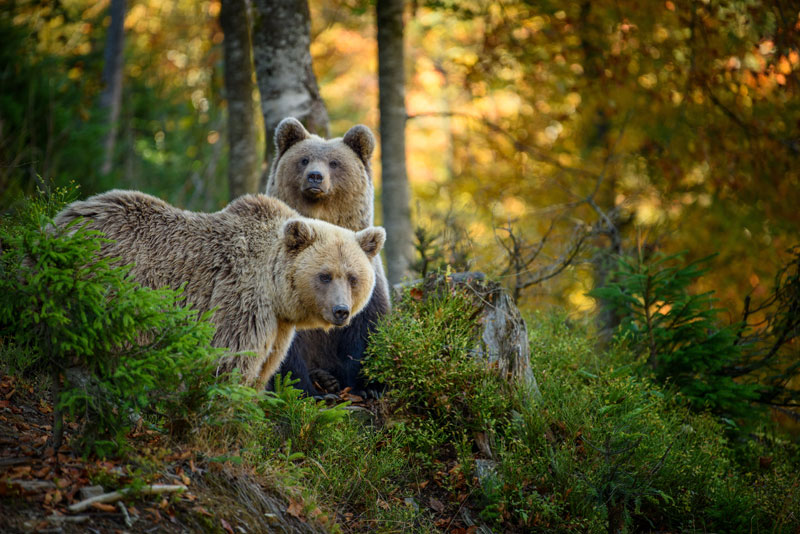
Kejimkujik National Park is the ancestral home of the Mi’kmaq People, and their petroglyphs and relics can be found throughout the park. Kejimkujik is a national historic site and is considered a preservation of the Mi’kmaq culture and history that dates back to a time before the pyramids of Egypt.
Many of the petroglyphs and ancient artwork found within the park show many early Mi’kmaw traditions, such as hunting, fishing and canoeing. Locals offer guided tours of some of the most extraordinary artifacts and paintings, so you can be sure to see them for yourself. You can even rent canoes and take the same canoe routes as the First Nations people millenia ago. However, Kejimkujik Lake apparently translates to “tired muscles” in Mi’kmaq, meaning the routes may not be as easy to navigate as they seem.
The park also is home to Nova Scotia’s only Dark Sky Preserve, which makes it a destination for stargazers across the world. Thousands upon thousands of stars can be seen at night, as can certain planets depending on the time of year.
Head-Smashed-In Buffalo Jump
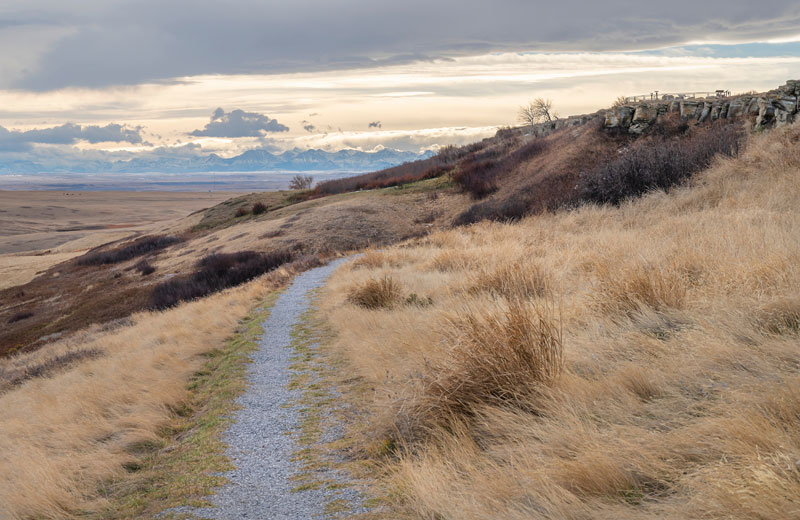
Perhaps the least enticing name of all the indigenous landmarks in Canada, but one of the most important historical sites in terms of enhancing our understanding of ancient Native life.
6,000 years ago, Head-Smashed-In Buffalo Jump, located in what is now southern Alberta, Canada, was home to a sophisticated hunting technique by the Great Plains tribes to successfully hunt bison. These ancient hunters used natural barriers such as coulees, depressions and hills to funnel the bison into drive lanes that ended at a steep cliff, over which the bison were stampeded. The animals’ carcasses were then butchered in a camp set up below the cliff to provide food and the materials for clothing and other materials.
According to Blackfoot legend, a young boy wanted to watch the buffalo jumping off the cliff from below. When the bison carcasses were taken away the boy’s dead body was found – with his head smashed in, which is where the name of the landmark comes from.
Designated a World Heritage site by UNESCO in 1981, Head-Smashed-In Buffalo Jump is now a popular tourist destination, as people travel from all over the world to learn about the cultural significance of this cliff to the Plains People, through incredible exhibits and knowledgeable guides. During the summer months, First Nations dancers and drummers perform to commemorate the hunt.
Blackfoot Crossing Historical Park
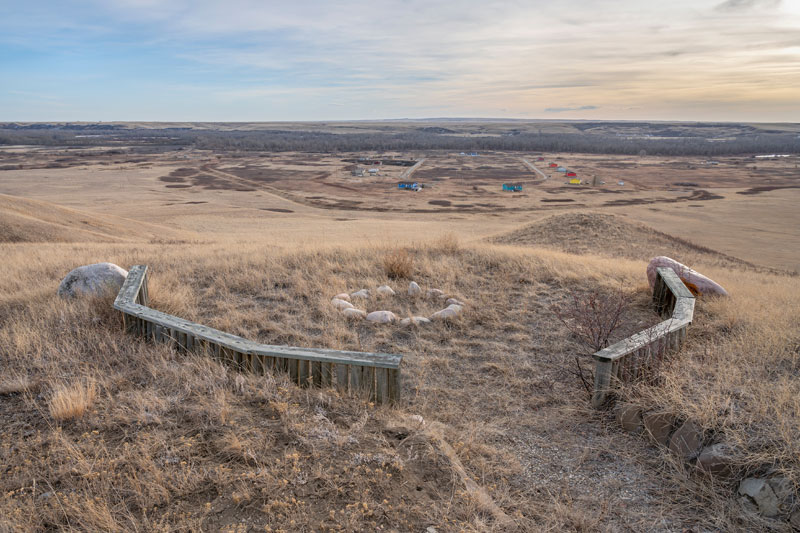
One of the few Native tribes recognized in both the United States and Canada, the Blackfoot people have a long, rich heritage that is celebrated, taught and observed in this unique Native American landmark. Blackfoot Crossing Historical Park is a place where tourists can indulge in the full Blackfoot cultural experience, through exhibitions, performances, and teachings.
The Blackfoot consists of three bands: the Siksika, Kainai, and Piikani Nations, however it is the Siksika Nation reserve that resides within this park.
Visitors can expect a full range of cultural and educational opportunities, such as Native guided tours, visiting the incredible Blackfoot Crossing museum, taking in a traditional theatrical performance or dance, or even spending the night in a buffalo hide tipi. Tourists may also take a step back in time and tour the site where Treaty no 7 was signed between the crown and the Blackfoot in 1877, formerly recognizing the tribe. There are even educational programs for visiting school trips, including Blackfoot Language classes, workshops and storytelling.
For those that really wish to indulge in Native history and heritage, the park also is home to Chief Crowfoot’s Tipi Village, where local Tribal members demonstrate traditional skills and customs.
Huron Village on the Huron-Wendat Reservation
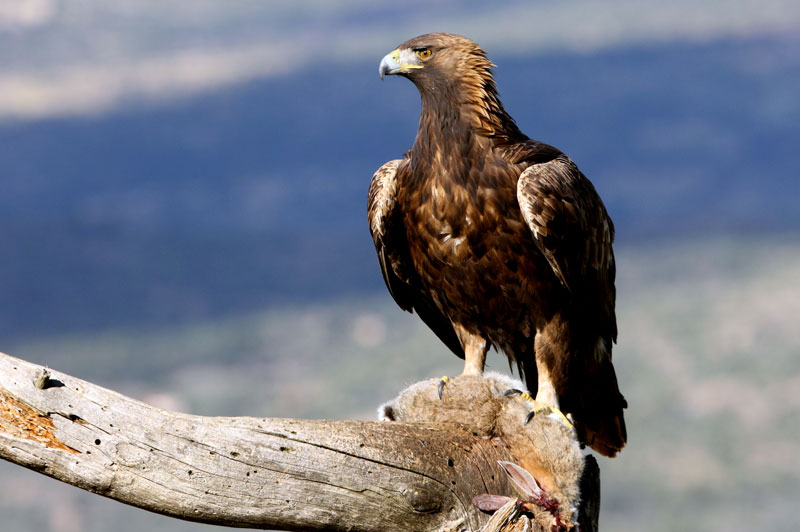
Just a 15 minute drive from Québec City sits the Huron Traditional Site, located in Wendake, on the Huron-Wendat Reservation. This site is an actual recreation of a traditional Huron village from centuries ago, designed and constructed based on historical records to make it as authentic as possible.
Visitors are able to take a guided tour from local Natives, partake in Huron activities, learn Native craft skills, even go on a shaman’s quest.
Wanuskewin Heritage Park
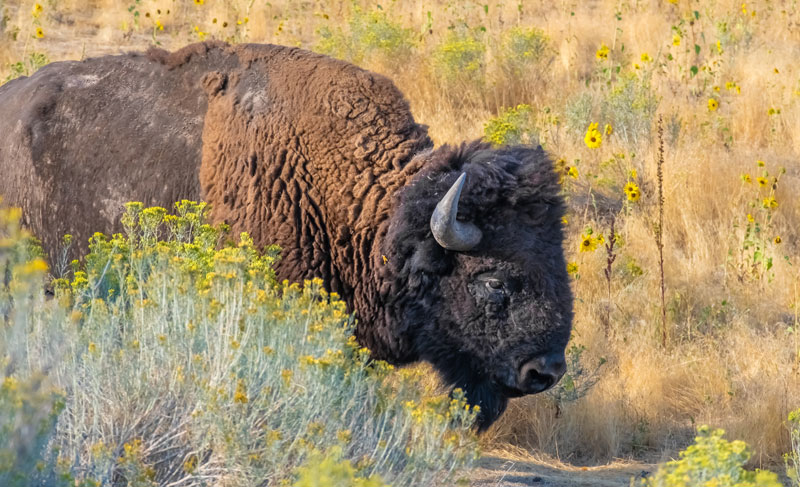
Located just above Opimihaw Creek and the South Saskatchewan River near Saskatoon, and one of the most important and culturally significant archaeological sites anywhere in Canada, the Wanuskewin Heritage Park has been drawing tourists and scientists alike since it first opened 30 years ago.
Saskatchewan’s Northern Plains tribes hunted buffalo and roamed this land 6,000 years ago, as soon as the Opimihaw Creek valley became capable of human occupation. Countless other Native tribes migrated to this location as well, due to its abundant natural resources and wildlife.
The Wanuskewin Heritage Park today boasts one of the greatest collections of ancient historical artifacts in North America, with no less than 19 known archaeological dig sites within the relatively small region. Some artifacts are some of the oldest found of any ancient civilization on Earth.
These archaeological dig sites are available to be viewed via guided tour, as are many ancient trails that can still be explored today. Visitors may even stay in a tipi, or camp overnight in this incredibly historically significant park.
Aanischaaukamikw Cree Cultural Institute
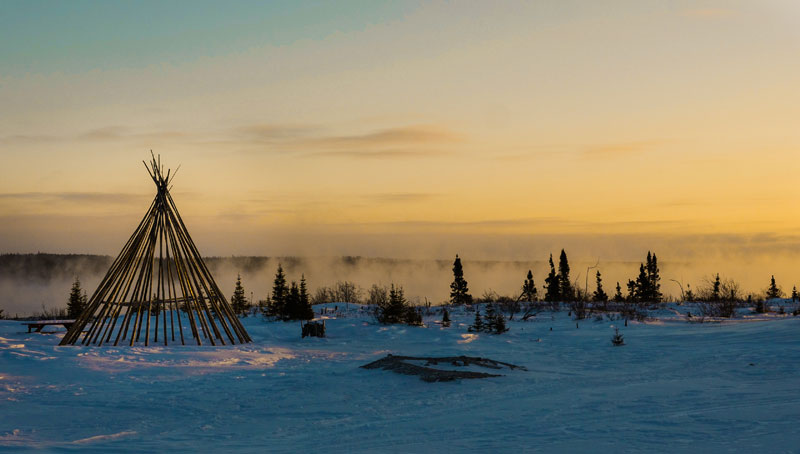
The newest Cree community, the community of Oujé- Bougoumou, is located on the shores of Opémisca Lake in Eeyou Istchee, in Quebec, Canada. It is quite the intimate experience for those who make the trek. The community has a population of just 795 people.
Located in the middle of the Oujé- Bougoumou is the highly awarded and recognized Aanischaaukamikw Cree Cultural Institute, honored with the We the Peoples’ award by the United Nations. The museum and exhibit is one of the best institutions for learning Cree culture and history anywhere in the world. Artifacts that date back to 3000 BC give an eye-opening exploration into life in ancient times on this land, as does a well-preserved archive within their library. Local Tribal members throughout the village welcome visitors, and are often happy to exchange stories, arts and lessons in history.
Metepenagiag Heritage Park
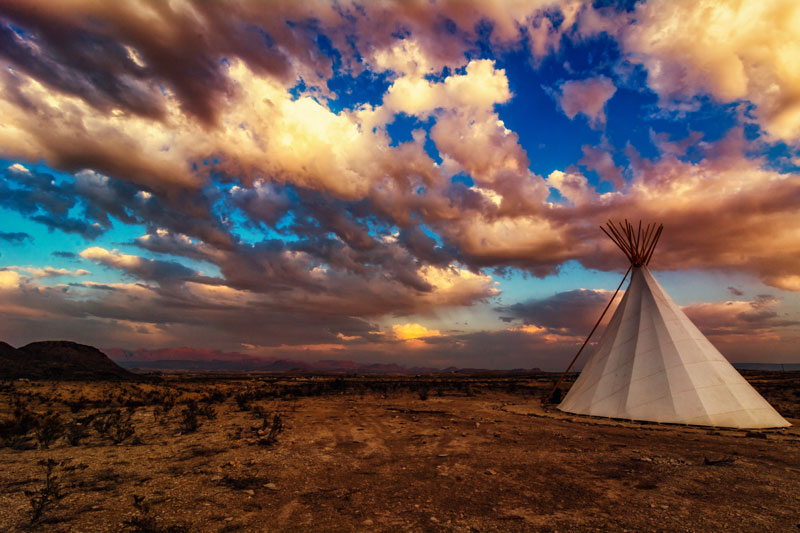
Perhaps one of the most deeply spiritual indigenous attractions in all of Canada, Metepenagiag Heritage Park in the New Brunswick province is practically a bucket list stop for those who want to not only visit indigenous land, but experience it.
Visiting this park is a walk back in time, to 3,000 years ago when Mi’kmaq First Nations fished and lived off the land and sea. Tourists immerse themselves in Mi’kmaq culture, whether it is sleeping in a tipi on the powwow grounds or visiting ancient burial grounds at Augustine Mound – a cemetery dating back to over 600 BC. Tourists often say their favorite experience is simply sitting down and listening to the elders tell stories that have been passed down from one generation to the next.
Metepenagiag is essentially a small village, representing the Mi’kmaq who has lived on these lands continuously for every one of those 3,000 years – making it one of New Brunswick’s oldest continuously inhabited communities. Visitors walk on the same paths as these Tribal members have for thousands of years, while enjoying educational guided tours by Tribal members about the land, the people and the countless ancient artifacts that have been found over the years.


